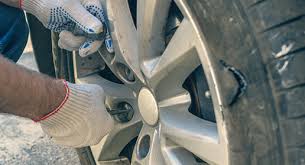A blown car tire while driving can result in a fatal accident. Because the balance of the car will be disturbed and the direction of the wheels cannot be predicted due to sudden changes in force and load. Therefore, you must know what to do when the car you are driving has a tire burst. As explained by mobile tyre fitting london, there are at least a few steps that a car driver can take when experiencing a tire burst.

Tire burst is a dangerous event but it can still be controlled where the keyword is don’t panic. Once panicked, usually the driver will take the wrong action and the car can not be controlled. This is the most crucial moment when suddenly a car tire bursts on the road, especially if it occurs on a toll road at a relatively high speed. When the brakes are applied, the weight of the car will move forward and the steering wheel will pull towards the tire burst. The ABS brake feature could not remedy the situation because the burst tire had no grip on the asphalt. In a situation like this, it is difficult for the driver to predict the direction of the car’s motion. Even if braking is too hard and there is momentum, the car can bounce and overturn. Even if it’s only a matter of seconds and you panic, pay attention to which tires burst. If the front tires, the direction of the steering must be held straight more firmly because the steering wheel will be pulled towards the tire that bursts. If the rear tire burst is relatively controllable because the control is still on the front tire. Keep the steering wheel straight ahead and do not perform maneuvers that make the car uncontrollable, such as turning the steering wheel in the opposite direction which will cause the car to bounce and potentially overturn.
For manual transmission cars, keep your left foot away from the clutch pedal. When the clutch pedal is stepped on, the car will slide uncontrollably because it is not restrained by the load of the engine rotation. The effect is the same as stepping on the clutch pedal because the tire rotation is not restrained by the engine speed. You can help reduce speed by lowering the gear position. However, this step is only effective if the speed of the car is not too fast because it is not easy to move the transmission lever when panicking and the effect is less pronounced on automatic cars. If it’s difficult, just keep the direction of the steering wheel straight ahead.

